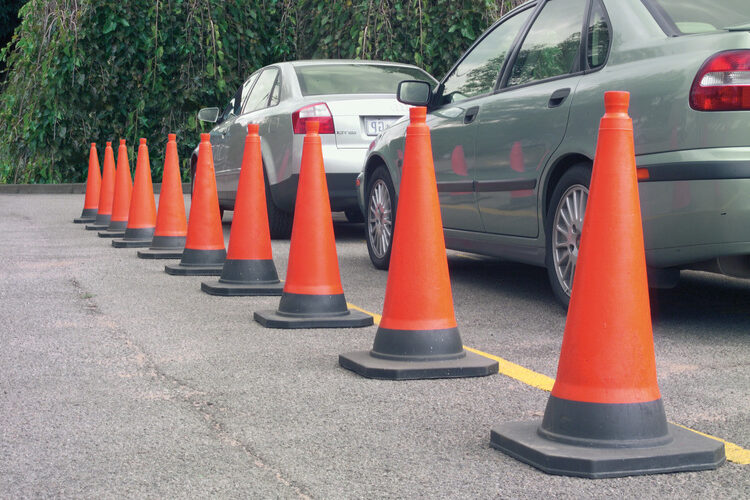Traffic Cone Placement Distances in South Africa
When observing an orange cone, or rather, a string of them on a public road, one is automatically forewarned that there are changes to the normal flow of traffic ahead and an immediate deceleration in speed is required. There are many reasons why traffic cones are used on public roads, but generally, they warn of a temporary caution to the change of traffic flow and direction for purposes such as law enforcement checkpoints, emergency services, maintenance of public or private property and road construction, for example.
To the untrained eye, the positioning and size of the cones may appear random. However, as there is a legal spacing between two motor vehicles travelling in the same direction based on speed and weather conditions, there are recommendations as to orange cone placement and the distances between them. Allow the leaders in road traffic safety equipment, Armco Superlite, to leave you better informed.

The Correct Colour and Size of a Road Cone
Road cones come in a variety of colours (usually orange, red or yellow), and different sizes for various purposes. There are cones for janitorial use, people management and crowd control, sports training, roadworks and more. In South Africa, for temporary traffic control and direction, an orange cone is used during the day. Should the temporary work continue into the night, a reflective sleeve should be placed over it, covering at least the middle third of the cone. These cones come in two different sizes for these purposes:
- The smaller of the two measures 450mm high x 280mm wide. This orange cone is used for suburban areas or stretches of road where the speed limit does not exceed 80km/h.
- The larger cones, which measure 750mmx385mm are used on national roads or stretches where speed limits are between 81-120km/h.
Placement of Traffic Cones
In conjunction with warning signs, speed reduction signs, flaggers and other delineator equipment, the road cone assists to warn and redirect traffic in a different direction. On a straight stretch of national road, for example, the larger of the two cone sizes would be selected. Once the traffic has reduced speed, it is channelled away from the impending obstruction and redirected into the neighbouring lane. Here is how they do it:
- In the above example, and due to the higher speed limit, cones should begin 150-200m from the working area. First positioned on the shoulder of the road, then gradually moving across the lane until it reaches the centre meridian. This area is known as the transition zone. A minimum of 12 cones should be used through this section spaced approximately 12-16m apart.
- Once the two lanes of traffic have merged, a buffer zone is created. This area protects workers from errant drivers. Since it is straight and traffic has been warned of the obstruction, lengths between cones are more distant and are usually spaced 20-24m apart.
- Continuing along the single lane, the traffic will be directed past the work zone where workers and machinery may work safely in the knowledge that traffic has been diverted and is regulated to an acceptable speed whilst passing the obstruction. Cones continue to be placed at 20-24m intervals.
- At the end of the work area, the termination zone follows. This is where the obstructed lane returns to use and, with warning and regulatory signs, the traffic flow and speed return to normal. The termination zone tapers off more sharply than the transition zone.
- Note: This is a demonstration example, these distances and cone sizes will vary between rural, urban and suburban areas, lengths of work zones, and curvature and gradient of the road being worked on.
At Armco Superlite, we supply the best quality road cones in accordance with SANS-specific requirements at extremely cost-effective rates. The heavy-based cones remain upright through windy conditions and heavy-transport draught. They are made from quality PVC and coloured with UV-resistant ink for longer lifespans. For a full range of our road safety equipment, consult with Armco, leaders in road safety equipment.
Contact Us for Prices on Road Cones:
Follow Us on Social Media:
